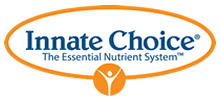| A Short Review of Innate and Adaptive/Acquired (Humoral/Antibody) Viral Immune ResponsesThe immune system is generically divided into two main components based on different cell types: innate immunity and adaptive or acquired immunity. The innate immune system component is comprised of macrophages, neutrophils, and dendritic cells (collectively phagocytes) as well as eosinophils, basophils, mast cells, and natural killer cells. The innate immune system is the rapid, non-specific first line of defense against viruses.
The adaptive or acquired immune system component is comprised of the cell-mediated immune cells named T-cells and the humoral immune cells named B-cells which secrete specific antibodies to specific antigens or pathogens. The adaptive component of the immune system comprised of the B and T-cells or lymphocytes, is slower reacting than the innate component, but it is much more powerful and specific and can “remember” antigens or invaders creating immune defense for future exposures.
Specific T and B-cells are produced based on specific protein antigens on the surface of viruses. Some T-cells (and some phagocytes of the innate immune system) produce cytokines which signal the rest of the immune system into action. Other T-cells called Killer T-cells recognize and kill virus infected cells. Other T-cells called Helper T-cells signal B cells to produce specific antibodies which then circulate and bind to the antigens (proteins) of viruses which then signal phagocytes from the innate immune system to engulf and destroy antibody-covered viruses.
Perhaps the most important T-cells are the Treg cells or T-Regulatory cells which act to maintain immune tolerance (prevent hyperreactive immune responses) by suppressing pro-inflammatory responses and preventing excessive T-cell responses. As you will read below, Vitamin A is required to produce Treg cells and Treg cells require omega-3 fatty acids, Vitamin A, and Vitamin D to function properly – as do the all the other immune cells
I like to describe innate immunity as the foot soldiers making up the rapid, first line of defense. If they are successful then there is no need to call upon the more logistical, more sophisticated, more powerful, and more specific defense strategies and equipment of acquired immunity – the second, more powerful, more specific line of defense.
If, however, the innate immune response is not successful, it will signal the adaptive or acquired immune defense system that it needs to mount a more robust defense. There are two main ways the innate immune system sends signals to activate the adaptive or acquired immune system. The phagocytes of the innate immune system engulf or phagocytose the virus and then display pieces of protein from the virus (antigens), on its surface via the histocompatibility complex (MHC) molecule. This allows T-Cells of the adaptive immune system to recognize and respond to these specific antigens and cells infected with the virus.
Phagocytes also have the ability to display protein danger flags or signals called pattern-recognition receptors (PRRs) on their surface which initiate the adaptive immune system response. Phagocytes also release chemical messengers called cytokines that further serve to call the adaptive immune system into action.
You can see that the two arms or components of the immune system work in a very coordinated team-like fashion in order to defend against invading viruses. Most of the time, IF fully functional, the innate immune system will prevent a successful full invasion by a virus by preventing the virus from securing a strong-hold.
We are all exposed to viruses all the time, we just don’t get clinically symptomatic because our innate immune systems kill the viruses without the need for full activation of our immune system – which is what makes us symptomatic. Remember, it is not the virus that gives us a runny nose and fever, these are strategies employed by our immune system in order to expel and kill viruses. Cold and flu medications may make you feel better, but they do so by down-regulating immune responses that lead to symptoms. Cold and flu medications may make you feel better, but they do so by weakening your immune defenses!
Because the influenza viruses, and the respiratory viruses that cause colds such as the rhinovirus and coronavirus, change each year, the B-cell antibodies our adaptive immune system creates to these viruses in one year are not able to be used to fight against the different strain of the virus the following year. This is why the CDC creates a different flu vaccine every year and insists that people get a flu vaccine each year.
There are several problems with this strategy that help to explain why the CDC so often reports flu vaccine ineffectiveness. First, the people who make the yearly flu vaccines must guess regarding which strain of the virus will be present in the upcoming flu season and they get this wrong more often than not – something they openly admit and then, confusingly, still insist people get the vaccine!?
Second, since the virus strain is different each year, and thus we cannot use antibodies from previous years for immune defense, it is our innate immune system and activated T-Cells of our adaptive immune system that are our primary defense against cold and flu viruses; not the antibody producing B Cells of our adaptive immune system. This begs several questions. How do so many millions of people get exposed to the influenza and cold viruses every year and not get sick? The answer? Their innate immune systems successfully defend them against these viruses. Why does virtually every person, other than those with a pre-existing serious health condition, who does get the flu, recover without serious health complications? Answer? These people have better innate and T-cell immune function than those with pre-existing conditions. In the terminology of the medical literature, they are less frail or less immunocompromised.
This brings us to the most important question. Why do some people have better innate and T-cell immune function than others? This leads us perfectly into the third major problem with the current flu prevention strategy, as well as the topic of this month’s newsletter.
Third, as you are about to read below in detail, without sufficient intake of the essential nutrients omega-3 fatty acids, vitamin D, and vitamin A, the immune system simply cannot function properly and cannot mount a proper viral immune defense or properly regulate the immune response. It is this variable, the one sadly most overlooked, that is the most significant with respect to our ability to mount a proper immune defense against the cold and flu – either in response to exposure to the actual virus or in response to exposure to a vaccine.
Deficiency of these nutrients is no small issue when it comes to health promotion and harm reduction in the context of baseline health and immune status during the Coronavirus Pandemic. Baseline health and baseline immune status will be significant variables determining how this pandemic plays out. How sick individuals become from Coronavirus is the single most significant variable determining the level of harm from this pandemic and baseline immune function is the most significant variable determining how sick any individual will become – the CDC has been saying this for weeks.
Healthy lifestyle, including ensuring sufficient intake of essential nutrients – especially those shown to be required for proper immune function, is a prudent and evidence-based harm reduction strategy. The evidence is unequivocal, if a human being is deficient in these essential nutrients they have deficient function of their immune function – they are immunocompromised!
I have never and would ever make a claim regarding the prevention of or treatment of Coronavirus – there simply is no evidence to read or cite – for any intervention! However, there is evidence to cite about the importance of ensuring the highest level of baseline health and immune status possible and there is peer-reviewed basic science and clinical evidence showing that deficiency of these nutrients compromises immune function and increases chance of respiratory viral illness and that sufficiency of these nutrients is required for proper immune function and decreases chance and severity of respiratory illness.
| The Essential Role of Omega-3 Fatty Acids in Viral Immune Defense
Gutierrez, S. et al. (2019) Effects of Omega-3 Fatty Acids on Immune Cells. Int. J. Mol. Sci. 20, 5028; doi:10.3390/ijms20205028. |
|
| “Alterations on the immune system caused by omega-3 fatty acids have been described for 30 years. This family of polyunsaturated fatty acids exerts major alterations on the activation of cells from both the innate and the adaptive immune system, although the mechanisms for such regulation are diverse. First, as a constitutive part of the cellular membrane, omega-3 fatty acids can regulate cellular membrane properties, such as membrane fluidity or complex assembly in lipid rafts. In recent years, however, a new role for omega-3 fatty acids and their derivatives as signaling molecules has emerged.”“A healthy and balanced diet is essential for the correct function of every part of our organism, including the immune system. Additionally, some dietary factors have been found to have immune-regulatory properties, including micronutrients such as Vitamin D or macronutrients such as fatty acids.”
Both omega-3 and omega-6-derived metabolites have important immune-regulatory functions. These metabolites are generally known as specialized pro-resolving mediators (SPMs) and can be classified in different families—prostaglandins, leukotrienes, thromboxanes, maresins, protectins, and resolvins.
“Although the specific mechanisms of action of omega-3 fatty acid regulation of immune cells function present several cell type-specific features, it is worth mentioning that omega-3 fatty acids, via in vitro stimulation or via dietary supplementation, effectively incorporate into the cellular membrane of all the immune cells investigated to date.”
“Polyunsaturated fatty acids possess multiple double bonds in their carbon chain. Since each double bond causes a bend in the carbon chain, polyunsaturated fatty acids cannot stack as tightly within cellular membranes as saturated fatty acids do. Therefore, the incorporation of polyunsaturated fatty acids increases the fluidity of cellular membranes.” |
|
| Effects of Omega-3 Fatty Acids on Macrophage Function |
|
| “Macrophages have a fundamental role as part of the innate immune system. They patrol multiple organs in a constant search for invading pathogens. They are able to recognize specific pathogen-associated molecular patterns (PAMPs) thanks to the toll-like receptors (TLRs) present on their surface. After pathogen recognition, they initiate the elimination process of the pathogen by engulfing it (phagocytosis) and secreting anti-microbial molecules such as reactive oxygen species (ROS). Simultaneously, they produce and secrete a large variety of cytokines and chemokines in order to recruit and activate other immune cells from both the innate and the adaptive immune system to mount an efficient immune response to completely eliminate the threat.”“The impact of omega-3 fatty acids on macrophage function has extensively been investigated since the 1980s. Since then, there are three main properties of macrophage biology that have been identified to be altered by omega-3 fatty acids: the production and secretion of cytokines and chemokines, the capacity of phagocytosis, and the polarization into classically activated or alternatively activated macrophages.”
“Probably the most renowned property of omega-3 fatty acids is their ability to reduce inflammation and their beneficial effect on inflammation-related disorders. For some of these diseases, it has been suggested that the cell type responsible for the inflammatory modulation by omega-3 fatty acids is macrophages.”
“The evidence supporting the anti-inflammatory properties of omega-3 fatty acids on macrophages, mainly decreasing the secretion of IL-1β, TNF-α, and IL-6, already backs the notion that omega-3 fatty acids blunt M1 macrophage polarization upon LPS stimulation. Additionally, omega-3 fatty acids have been found to promote M2 polarization in macrophage cell lines and primary mouse macrophages.”
“DHA and EPA can increase the phagocytic capacity of macrophages.” “Some investigators have suggested that this increase in the phagocytic capacity of macrophages upon omega-3 treatment could be related to changes in the cellular membrane composition and structure caused by the incorporation of the omega-3 fatty acids, although causation still remains to be confirmed.” |
|
|
Effect of Omega-3 Fatty Acids on Neutrophil Function
|
|
| “Neutrophils are the first cells to be recruited to the site of inflammation and have an important role in the clearance of pathogens. However, neutrophils can also interact with the adaptive immune system by promoting naïve T cells to transition into T helper1 cells and can present antigens to B-cells in the spleen.”“Omega-3 fatty acids have been shown to be incorporated into phospholipids in the cell membrane of neutrophils at the expense of the omega-6 fatty acids linoleic and arachidonic acid. Once the omega-3 fatty acids have been incorporated into the phospholipids, they can be metabolized by neutrophils into prostaglandins, leukotrienes, thromboxanes, maresins, protectins, and resolvins. Omega-3 fatty acids, and their metabolites, modulate neutrophil function in several ways, including neutrophil migration, phagocytic capacity, as well as the production of reactive oxygen species and cytokines.”
“Omega-3 fatty acids have been shown to improve the phagocytic capacity in neutrophils in mice. In vitro, adding DHA to extracted peritoneal neutrophils leads to a 35% increase in phagocytic capacity as well as a two-fold increase in fungicidal capacity.”
“This effect has partly been confirmed in humans too. Ten volunteers were given fish oil supplementation containing 26% EPA and 54% DHA daily for two months. Thereafter, the phagocytic capacity of the neutrophils in the blood was increased by 62%.” “In humans, supplementation with 54% DHA and 26% EPA for two months increased ROS (Reactive Oxygen Species) production in phorbol-myristate-acetate stimulated neutrophils.” |
|
|
Effects of Omega-3 Fatty Acids on T Cells
|
|
| “T cells are thymus-derived lymphocytes that recognize antigens presented by antigen presenting cells (APCs) through the T cell receptor (TCR). They comprise a heterogeneous group of cells with different immune properties, which makes their classification complex. T cells are classically classified into two main subsets, CD4+ T cells and CD8+ T cells, depending on their surface expression of CD4 or CD8 molecules, respectively. Both subsets differ on immune properties and functions. Whereas CD4+ T cells play major roles against bacterial infections, CD8 T cells mediate the immune response against viral infections. Additionally, T cells can be classified into helper (Th) and cytotoxic T cells. Th cells regulate the function of other immune cells whereas cytotoxic cells destroy virus-infected cells.”
“T cells are first activated by the interaction of the T cell receptor (TCR) with APCs such as macrophages or dendritic cells. Therefore, alterations in the activation of APCs by omega-3 fatty acids are the first mechanisms by which omega-3 fatty acids may modulate T cell activation in vivo. However, direct effects of omega-3 fatty acids have also been described in the literature.”
“Generally, ALA, DHA, and EPA exert an inhibitory effect on the activation of immune cells from both the innate and the adaptive branch. Interestingly, some specific immune functions are promoted by dietary omega-3 fatty acids in specific immune cell types, i.e., phagocytosis by macrophages and neutrophils or Treg differentiation, suggesting that omega-3 fatty acids do not act as unspecific immune-repressors.”
What this all means, is that the immune system cannot function properly, be up-regulated properly, or be down-regulated properly without sufficient intake of omega-3 fatty acids. It would be biologically erroneous to think of omega-3 fatty acids as either anti-inflammatory, immune system up-regulating, or immune system down-regulating. It is much more accurate to view omega-3 fatty acids as essential nutrients which are required for the proper overall function and regulation of immune responses.
When appropriate, omega-3 fatty acids are important to prevent chronic inflammation and hyper-immune responses. At other times, when appropriate, omega-3 fatty acids are important to allow up-regulation of immune function such as when a virus is detected and up-regulation of macrophages and neutrophils is required.
Omega-3 fatty acids are not what controls or determines the immune response, omega-3 fatty acids are essential nutrients that are required ingredients or tools of the immune response. Deficiency of omega-3 fatty acids causes immune dysfunction, sometimes in the form of pro-inflammation or hyper activity, and sometimes, as in the case of viral infection, in the form of downregulated innate immune response via macrophages and neutrophils which, in turn, causes a decreased T-Cell response to viruses because macrophages and neutrophils signal the T-Cell response. |
|
| I know that was LONG, but I wanted to help you feel intellectually satisfied that a high quality Omega 3/Fish Oil is necessary for a healthy you.
Please also consider that all Omega 3/Fish Oil supplements ARE NOT created equal.
I chose to carry the Innate Choice Omega Sufficiency at New Day because of it’s quality and purity.
Did you know that many of the most commonly purchased Fish Oil/Omega 3 supplements are actually RANCID and therefore doing the OPPOSITE of what you might want them to do to support your health and immune system?
Innate Choice Omega Sufficiency is available at New Day now.
Pick one up on your next visit, or click the button below for us to set one aside for you Supply is limited! |
|
|




